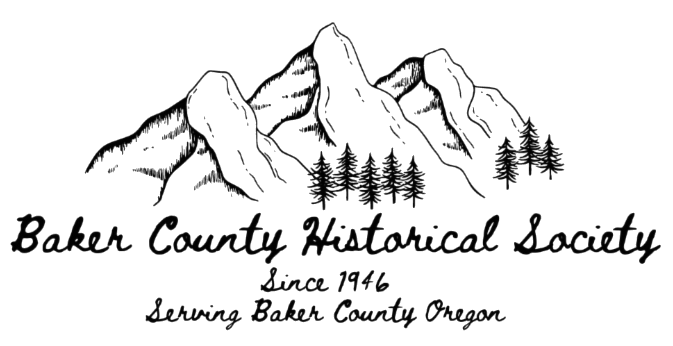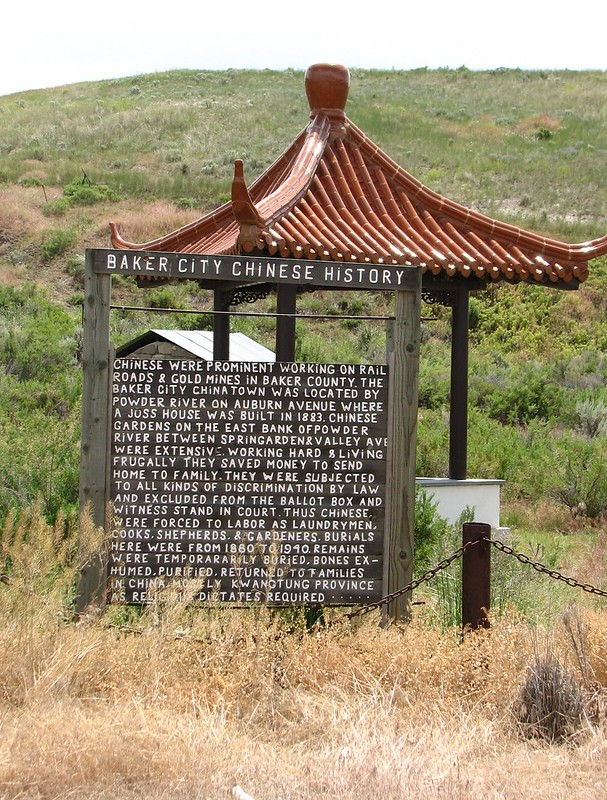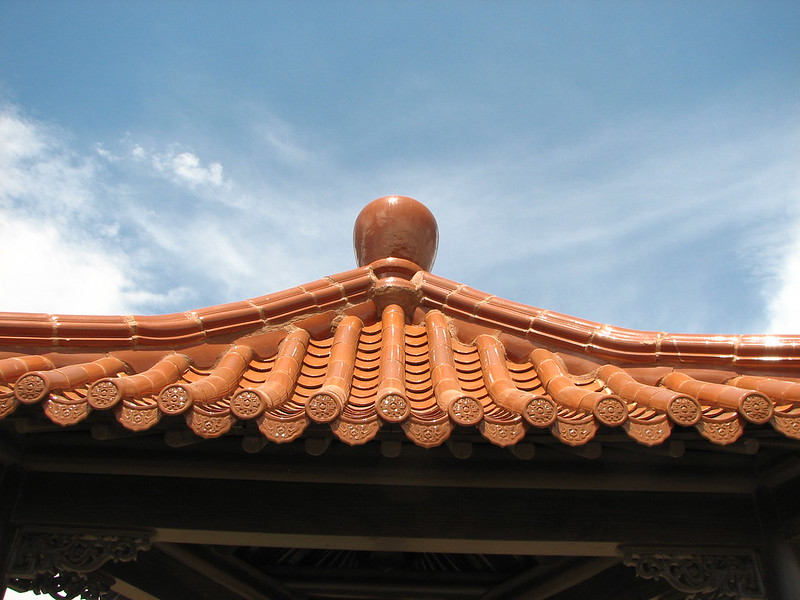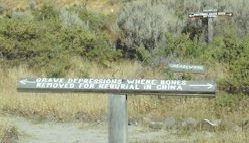1880 – 1940
Chinese Community
Baker County Historical Society began preservation efforts at the Chinese Cemetery in 1994, with a committee of Jim Evans, Alvin Ward, Dick Taylor and Don Christy, Annie Wong and Richard Harris were project volunteers. The Bruce Wong family of Portland represented the Chinese Consolidated Benevolent Association.
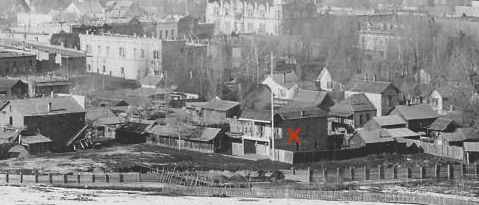
The Chinese Cemetery, located on Windmill Road, just east of the I-84 Exit 304, features a new pavilion dedicated on August 24, 2002. The pavilion building was designed and manufactured in Suzhou, China. Cemetery structures include a replica of the small, square stone burner (locally called “Prayer House”) which was used for burning prayer papers, paper money and paper objects for the departed. Although the building is “taller than a man,” it was not intended to be entered, but provided a window for performing appropriate ceremonies for the annual Ching Ming Memorial Festival, on a date determined by the lunar calendar (often early April).
Two reader boards explain some of the history of the cemetery and of the Chinese in Baker County. The new marker lists Sam Fong, Wing Fong, Yin Chin Hule, Ching Hung, Chung Lee, Hong Loy Lee, Kow Lee, Sun Lung, Hep Fong Wong, Kern Wong, King Wong, Poy You Wong, Tai Wong, Wing Wong, Yen Wong, Toy Koy Young, “and 50 others for whom no names or records are available.” Of the approximately 46 people originally buried in the cemetery, one marked grave remains in the cemetery, that of Lee Chue, 1882-1938. Some years after interment, most of the other remains were exhumed and transported to China by previous arrangement with the Chinese Consolidated Benevolent Association of Portland, Oregon.
Alvin Ward made the reader boards now on display at the cemetery. Art Horvath reset the loose stones of one burner. High school students of Chinese descent from the Portland area cleaned the grounds in 1995. BHS National Honor Society maintains the grounds. In 2002, Sid Johnson and Co., and Bennett Construction assembled the Pavilion, a gift of The Richard and Priscilla Harris Family Trust. In 1900, Baker City’s Chinese population peaked at 264 citizens, 4% of the city’s total population of 6663. Ten years later, the Chinese population was only 37 out of 6742. Presently Baker City residents of Chinese descent represent slightly fewer than 1% of the town’s nearly 10,000 citizens. Portrait of an unnamed Chinese man dated near the turn of the century. From the Brooks Hawley Photo Collection, Baker County Public Library. Baker City’s “China Town” and temple, or “love house,” on the north side of Auburn Street about 1900. The temple is the building with the balcony, lower right. Detail of photo from the McCord Historic Photo Collection, Baker County Public Library.
Baker City’s “China Town” was located in the vicinity of Auburn Avenue and Resort Street, with some businesses facing Resort Street, and some on the north side of Auburn between Resort and the Powder River. In 1886, these involved half a dozen Chinese stores, a gambling establishment, and a temple or “joss house,” which cost $10,000 to build, on the north side of Auburn Avenue, just west of the Powder River. The residential and garden area extended east along Auburn Avenue and south to Spring Garden.
Anna La Kamp who lived on Spring Garden told me once that there was an artesian well there. The Chinese had their gardens all over this area and used the water from the well to irrigate. Later, when Baker decided to put in water mains to houses they first built a reservoir on top of the hill and pumped water up to the reservoir. The water went downhill and thus there was a pressure system. I checked this story out with an old Bakerite Chet Smith who said that was true and in addition to this, there was a cement plant built by the well to use the water in the manufacture of cement water pipe for the city to put underground to carry the water.
Gary Jaensch
Names of the Interred
| Sam Fong | Sung Lung |
| Wing Fong | Hep Pond Wong |
| Yin Chin Hull | Kern Wong |
| Chang Hung | King Wong |
| Chung Lee | Poy You Wong |
| Hon Lee | Tai Wong |
| Hong Loy Lee | Wing Wong |
| Kow Lee | Yen Wong |
| Foy Kay Yung | 50 others for whom no names or records are available |
Burial Dates
| 1894-1899 | 2 burials |
| 1900-1909 | 7 burials |
| 1910-1919 | 12 burials (1 female) |
| 1920-1929 | 16 burials |
| 1930-1939 | 7 burials |
| 1940-1948 | 2 burials |
| TOTAL: | 46 BURIALS (1 FEMALE) |

